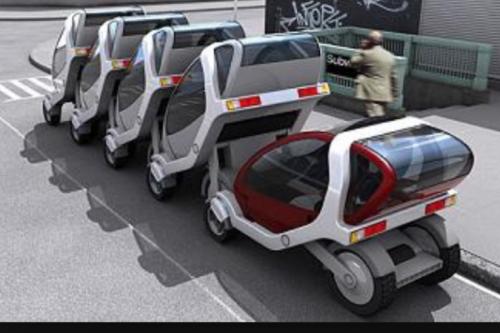The heart of trade warfare: The technological race and transition
China puts the results of American research and innovation on the market faster and at a cost that is a fraction of the West.
- Análisis

The trade war waged by the United States against China is taking place in a scenario where the former observes a technological lag in the areas of telecommunications, energy, electric cars, cell phones and computers vis-à-vis China. The effects of the loss of American manufacturing productivity and its inability to soon implement its advances in research and technological development, faces a great threat on the part of the latter.
The delocalization of production in order to reduce costs, starting in the late 1980s, implied the transfer of technology to emerging economies. China, unlike Mexico, implemented research and technological development policies based on these transfers. It invested in high-level education, with specialized studies in the most advanced western universities, to form cadres capable of reverse engineering, and from there build their own developments. Thus, it began to develop productive and technological capacity for flooding the world market with products with a higher technological composition at a lower price compared to the West. Initially, they did not invest large sums in research and development but in capacities to dismantle these technologies and reconvert them into other products. It is analogous to the process in Japan and South Korea in previous decades.
The U.S. began to lose market share in the global high-tech market since the beginning of the 21st century and concentrated on completing its global value chains to increase profitability. Meanwhile, China, since 2005, became the world's largest high-tech exporter. Since then, the gap has widened and in 2018 exported three times the value of these exports than the United States and more than ten times that of European countries. The fact is that China exported a total of 2.4 billion dollars in 2018 and the United States 1.6 bn dollars. China puts the results of American research and innovation on the market faster and at a cost that is a fraction of the West. The question is, why can neither the United States nor Europe do it with the same speed and cost.
The international division of labour of the last seven decades has left the United States focused on oil and as a processor of raw materials. Its main exports are gasoline, gasoline-powered cars, gasoline-powered airplanes and agricultural products. China leads the 5G mobile telecommunications network over U.S. corporations, exports cheap high-tech cell phones. It leads the change of energy matrix, and exports renewable energy transformers (photovoltaic cells, lamps with this, etc.) and related products to this change.
On the other hand, the weight of the American oil industry is such that it has not begun to replace the energy matrix, not only for ecological reasons but also for costs. The first round of tariffs imposed by the US, in August 2017, was against solar panels produced in China. This expresses the symptom of the technological inability to lead the energy transition. China is at the forefront of changing the energy matrix. The fight now is against China's clean energy (cars, planes, trains, solar panels, power generation).
The will to perpetuate the oil energy matrix prevents the US from leading the technological transition towards electric motors and cars. China currently has an electric vehicle fleet of 2.3 million cars, more than double that of the United States, and sells 54% of the world's electric cars (IEA, 2019). The trade war does not cause the technology gap to narrow nor the rest of the world to stop buying these products. China, is followed by Sweden, Germany and Japan in the production of electric or hybrid cars that will replace gasoline between 2019 and 2023. The United States is the second largest consumer of electric or hybrid cars, almost all manufactured by foreign MNCs within its country.
In the commercial war, both economies are well aware of weak points. The U.S. has a monopoly on certain semiconductors, with the advantage of Intel, Qualcom and Broadcom in processors and certain microchips, and the dollar as the world currency. China has the 5G mobile network, the forefront in electric cars, new clean energy, and high-tech cell phones at a fraction of the American price; it controls the market for rare earths and material inputs for strategic productions.
Finally, the U.S. urge to interfere with China's deployment is growing, and the protectionist trade route is not working. The way the United States got Japan off its back in 1985 was through the 1985 G7 Plaza Agreement, which forced Japan to revalue its currency and lose competitiveness. This indicates that the war is going to move to the finance and exchange field.
- Oscar Ugarteche is a Senior Researcher, IIEc-UNAM, SNI / Conacyt, Coordinator of the Latin American Economic Observatory (obela.org).
- Armando Negrete, Academic technician IIEc-UNAM, member of obela.org
Source: OBELA.
Del mismo autor
- El multilateralismo bipolar 08/03/2022
- Bipolar multilateralism 07/03/2022
- What does 2022 bring? Uncertainty 31/01/2022
- ¿Qué trae el 2022? Incertidumbre 31/01/2022
- The most expensive Christmas of the century... (so far) 20/01/2022
- La navidad más cara del siglo (hasta ahora) 20/01/2022
- Lo que pasó en el 2021 10/01/2022
- What happened in 2021 10/01/2022
- Estados Unidos: el elefante en la habitación 08/11/2021
- The elephant in the room 07/11/2021
Clasificado en
Clasificado en:
China-EEUU, Ciencia y tecnología
- Alfredo Moreno 22/12/2021
- William I. Robinson 20/12/2021
- William Robinson 16/12/2021
- Evgeny Morozov 16/08/2021
- Joseline García, OBELA 11/08/2021








